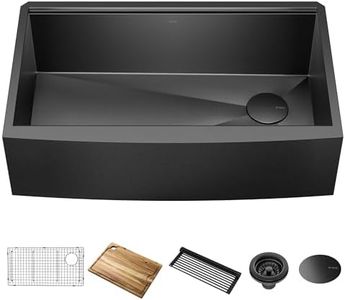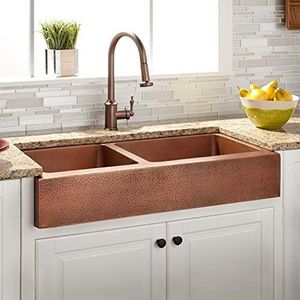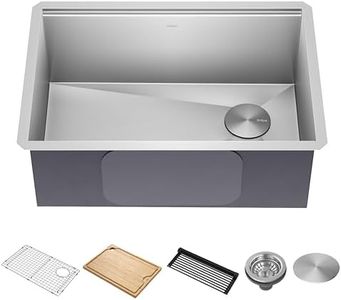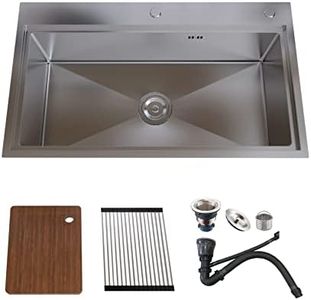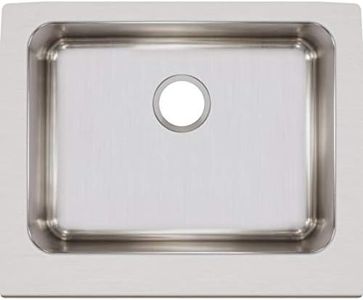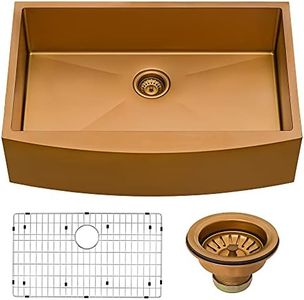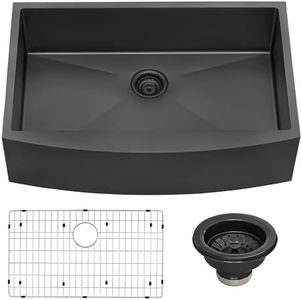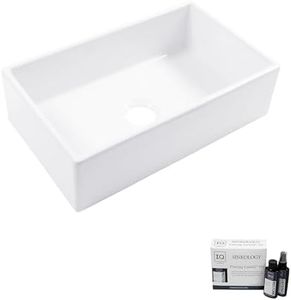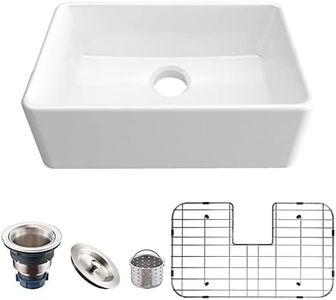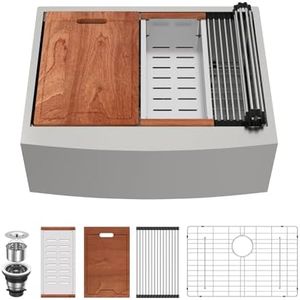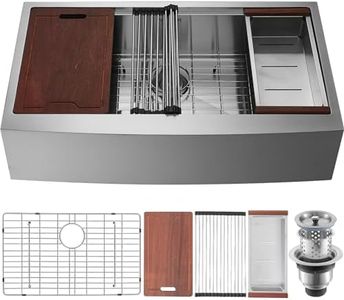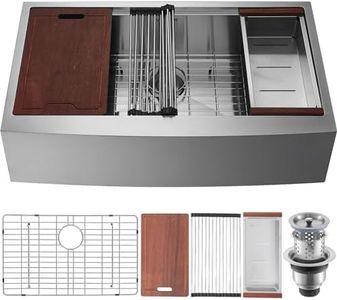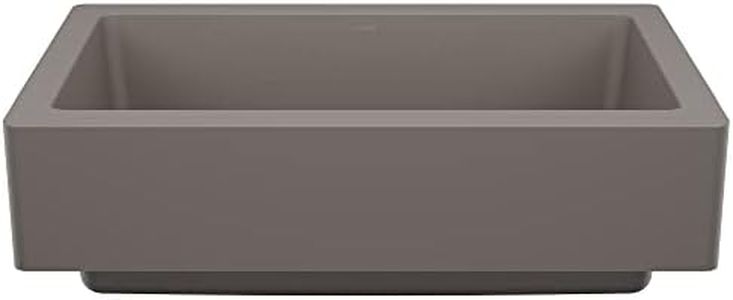We Use CookiesWe use cookies to enhance the security, performance,
functionality and for analytical and promotional activities. By continuing to browse this site you
are agreeing to our privacy policy
10 Best Farmhouse Sinks
From leading brands and best sellers available on the web.Buying Guide for the Best Farmhouse Sinks
When shopping for a farmhouse sink, you're not just choosing a practical kitchen item but also a style statement that can influence the entire look and feel of your kitchen. Farmhouse sinks, also known as apron sinks, are popular for their deep basins and exposed fronts, which make them both functional and attractive. To pick the right farmhouse sink for your home, it's crucial to understand the main features that affect how the sink will look, fit, and work in your kitchen. By considering the key specifications, you ensure that the sink matches your cooking and cleaning habits, fits the available space, and complements your kitchen’s decor.MaterialFarmhouse sinks are available in several materials such as fireclay, stainless steel, cast iron, copper, and stone. The material influences durability, stain resistance, maintenance, and appearance. For example, fireclay is known for its classic white look and resistance to chips, while stainless steel is lighter and modern but may show water spots and scratches more easily. Copper gives a rustic appearance and has natural antimicrobial properties but requires special care. Consider how much use your sink will get, how much maintenance you’re willing to do, and the overall style of your kitchen when choosing a material.
Size (Width and Depth)Farmhouse sinks come in varying widths (commonly 24 to 36 inches) and depths (typically 8 to 10 inches). The size affects your kitchen workflow; wider and deeper sinks can hold larger pots and pans or more dishes at once, which is helpful for big families or those who cook often. However, a larger sink needs more cabinet and counter space. When deciding, measure your available cabinet, consider your typical kitchen tasks, and pick a size that balances your needs and available space.
Number of BowlsYou can choose between single-bowl and double-bowl farmhouse sinks. A single bowl offers one large, uninterrupted space for washing big items, which is great if you handle lots of large cookware. Double bowls, with two compartments, are ideal for multitasking, such as washing dishes on one side and rinsing on the other. Think about your typical cleaning routine to decide if more separation or a larger open area suits you better.
Installation TypeMost farmhouse sinks are installed as 'apron-front' models, where the front face is exposed and extends past the cabinetry. However, there are variations like undermount and flush-mount installations. The installation type affects aesthetics, counter space, and sometimes even how you clean around the sink. Your cabinet configuration and counter material will help determine which installation types are practical for your kitchen.
Drain PlacementDrain placement can be centered or offset. A center drain is standard and works well for most users, but an offset drain provides more usable space and can make it easier to stack dishes or clean the sink without blocking the drain. If you wash many large items or want to place a drying rack in your sink, an offset drain might be preferable. Consider how you typically use the space when choosing drain placement.
Finish and ColorFarmhouse sinks come in various finishes and colors, from glossy white to matte black, stainless, or coppery tones. The finish and color you choose can be a statement piece or blend seamlessly with your counters and cabinets. Lighter finishes are classic but may show stains, while darker ones can hide marks but may make scratches more visible. Choose a finish that matches your kitchen’s theme and complements the rest of your fixtures.
